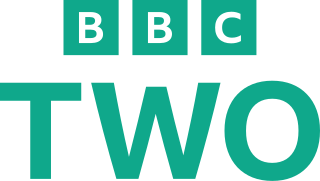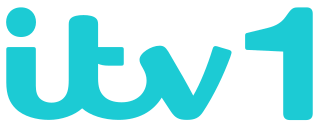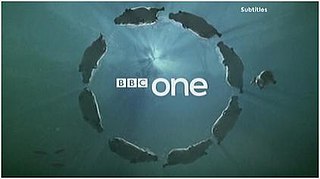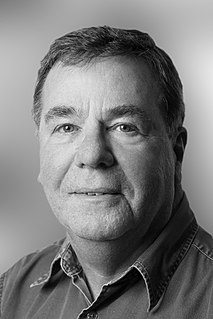| Title [3] | Air date | Description |
|---|
| Feel Good | 27 September 2018 – present | A bunch of multicoloured blobs float around the screen, and then stick together forming the 2 curve and resembling sounds of squeaks, possibly inspired by the 1993–94 Pump sting from the 1991 set. This was the first ident of the new look to be used at 6:00am on 27 September 2018. This ident is mainly used to introduce a wide variety of programmes. |
| Captivating | 27 September 2018 – present | Various paper ribbons move about on screen to form the 2 curve. Often used to introduce a wide variety of programmes. |
| Escapist | 27 September 2018 – present | Rippling purple and orange fabric looking like canyon walls make 2 curve, possibly inspired by Silk from the 1991 set. Often used to introduce a wide variety of programmes. |
| Authoritative | 27 September 2018 – present | Authoritative is the most generic used of the set. Piles of paper wave around forming the 2 curve, possibly inspired by Paper Cut-Out from the 1991 set. Stills of this ident were used for slides, such as breakdown slides and slides containing information for the BBC Action Line. Used to introduce serious programming and the BBC News. |
| Reflective | 27 September 2018 – present | Sheets of paper turn over between the curve 2, possibly inspired by Diary from the 1991 set. This is the second generic ident of the set. Primarily used for serious programming and the BBC News. |
| Authoritative 2 | 27 September 2018 – present | Also known as Mind-Bending. White and grey lines overlapping and forming the 2 curve, possibly inspired by Optics from the 1991 set. The ding sound is the same as Authoritative. This is the third generic ident of the set. Used for serious programming and the BBC News. |
| Wonder | 27 September 2018 – present | A green and blue crystalline mineral split in half by the 2 curve, possibly inspired by Water (or Water Reflection) from the 1991 set. Often used to introduce natural history programmes. |
| Celebratory | 27 September 2018 – present | A multicoloured firework theme makes up the sides of the 2 curve, possibly inspired by Firecracker from the 1991 set. Often used for entertainment, sport and music programming. |
| Revelatory | 27 September 2018 – present | A ribbon made of metal (resembling a slinky) moves about on screen to form the 2 curve, possibly inspired by the 1993–94 Slinky sting from the 1991 set. Often used to introduce a wide array of programmes, along with the BBC News. |
| Offbeat | 27 September 2018 – present | An orange fluffy creature moves about the screen with its sticky purple feet and stops forming the 2 curve, possibly inspired by Dog from the 1991 set. Primarily used to introduce a wide array of programmes. |
| Thought-Provoking | 28 September 2018 – present | Also known as Initial. Black and white patterns dance around in the 2 curve, possibly inspired by the 1993 Op Art sting from the 1991 set. The initial version of Thought-Provoking appears to have been withdrawn along with Visceral in early October 2018. However, a revised version with the black background lightened and the white areas dimmed to an off-white/pale grey, was introduced on both BBC Two Network and Northern Ireland in November that year. It is a rare ident, though it mainly appears before factual and quiz programmes. |
| Visceral | 29 September 2018 – present | Brown, black and gold pins and scales open and close forming the 2 curve. Used to introduce drama programming and films. The initial version of Visceral appears to have been withdrawn along with Thought-Provoking in early October 2018. However, a revised version with reduced colour saturation was introduced at 2:40am on the evening of 3 November. Besides on 30 January 2021, the initial version has returned with the tagline "Channel of the Year" being added due to BBC Two wins Channel of the Year at the Edinburgh TV Awards in November 2020, then it became as a regular ident (without the tagline) on 30 October after the 2021 BBC rebrand. |
| Dark | 30 September 2018 – present | Set entirely in shades of grey, the 2 curve animates like coral reef. Occasionally used, though it is mostly shown before drama and serious programming. |
| Gritty | 6 October 2018 – present | Rising and falling blocks in the shape of the 2 curve. Often used for drama and factual programming. A silent version of this ident was used once on 21 September 2019. |
| Bold | 10 October 2018 – present | A broken up black and gold stone effect (resembling a causeway) makes up the 2 curve, possibly inspired by the 2002 Giant's Causeway ident (which aired on BBC Two Northern Ireland) from the 2001 "Personality" set. Occasionally shown before drama and factual programmes. |
| Charged | 13 October 2018 – present | Clouds billowing around, and the 2 curve is formed by light shining through a crack in the clouds. Used for a variety of programmes, including drama and documentary programmes. |
| Sharp Irreverent | 21 October 2018 – present (promos)
27 October 2018 – present (ident) | Also known simply as Sharp. Several coloured threads ripping apart, with the 2 curve being seemingly cut into each one as they appear. Mostly used to introduce a variety of programmes, including quiz, entertainment and comedy. |
| Silly | 3 November 2018 – present | Also known as Squish. Blobs of slime (with googly eyes) shaped like the 2 curve move around the screen, possibly inspired by the 2002 "Bugs" era of CBBC. Used for CBBC and CBeebies programmes shown on the channel on Saturdays, as well as comedy, entertainment, and light factual programmes. |
| Gripping | 8 November 2018 – present | Dark blue-coloured fabric is seen wringing itself into the shape of the 2 curve and back, possibly inspired by the 1997 Tug of War ident (which aired on BBC Two Wales) from the 1991 set. Rarely used for drama, factual, and serious programming. |
| Absorbing | 28 November 2018 – present | Multicoloured liquid patterns slowly move across the screen, forming the 2 curve, possibly inspired by Paint from the 1991 set. Used to introduce a variety of programmes, including food-based and light factual programmes. |
| Sparky | 22 April 2019 – present | A swarm of multicoloured plastic mini balls moving around the screen into the shape of the 2 curve in middle of white and back. Often used to introduce sports, entertainment and light factual programmes. |
| Discovery | 28 May 2019 – present | A planet sized earth map in the middle of the 2 curve in blue spins around, and stops to reveal the pale red areas of the earth in the middle of the same curve in red, possibly inspired by the 1997 Mars Weekend ident from the 1991 set. Used to introduce documentary, factual, natural history and space-based programmes. |
| Intense | 15 June 2019 – present | The camera zooming through colour rings, before they form up the 2 curve and resembling the sound of the crowd with a football being kicked about (or a tennis ball being squashed by the racket), resembling (and probably referencing) the 1988, 1996 and 1997 BBC Sport idents. The ding sound is the same as Celebratory. Used to introduce light entertainment, sports and quiz-based programmes. |
| Maverick | 16 June 2019 – present | A small white ball moves around the screen, usually bouncing off pachinko-like pegs, with various objects and shapes popping up and disappearing to form the 2 curve. The ding sound is the same as Feel Good. First shown as promos on 26 May, airing as an ident on both the network, Northern Ireland and Wales from 16 June. Used to introduce comedy, drama and films programming. |
| Illuminating | 20 June 2019 – present | A light scans around the 2 curve in a multicoloured background, with the shapes are changing while it scans, possibly inspired by both the 1995 Corridor sting from the 1991 set and Invisible Walls from the 2001 "Personality" set. The ding sound is the same as Charged. Used to introduce a variety of programmes. |
| Punchy | 5 October 2019 – present | Consists of blue and red-orange glass stripes moving all around before they crashed together and forming the 2 curve, possibly inspired by both the 1974 Striped 2 ident and Neon from the 1991 set, with the red-orange stripes reminiscent of the 1979 ident. Used to introduce a variety of programmes. |
| Thought-Provoking 2 | 23 November 2019 – present | Wooden blocks, furniture blocks, metallic shapes, walls, glass and stones moving around to form the 2 curve, possibly inspired by the 1994–95 Modern Art Gallery sting from the 1991 set. The ding sound is the same as Thought-Provoking. Rarely used to introduce documentary, factual and quiz programming. |
| Inspiring | 10 April 2021 – present | A bunch of flower petals (resembling paper cones) swirl and spin around the screen and stops to form the 2 curve, possibly inspired by Garden from the 1991 set. The ding sound is the same as Wonder. Used to introduce a variety of programmes. First aired on 10 April 2021, with the tagline "Channel of the Year" being added due to BBC Two wins Channel of the Year at the Edinburgh TV Awards in November 2020. The tagline "Channel of the Year" was disappeared after the October 2021 BBC rebrand. The version without the tagline "Channel of the Year" only aired on BBC Two Northern Ireland. |












